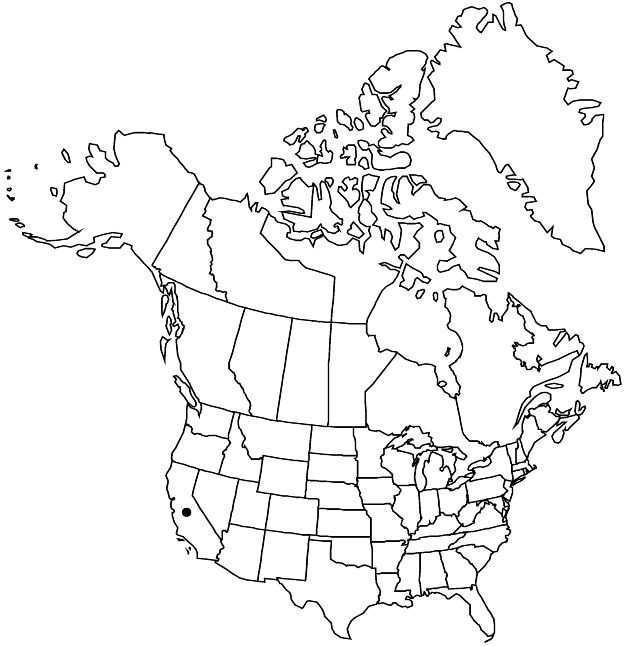Ceanothus cyaneus
Proc. Calif. Acad. Sci., ser. 4, 16: 361. 1927.
Shrubs, evergreen, 2–5 m. Stems erect, not rooting at nodes; branchlets light green, not thorn-tipped, angled in cross section, flexible, often tuberculate (tubercles minute, brownish), puberulent, glabrescent. Leaves: petiole 2–6 mm; blade flat, ovate-elliptic, 20–50 × 15–20 mm, base rounded, margins usually denticulate to serrulate, rarely entire, not revolute, teeth 23–58, apex acute to obtuse, abaxial surface pale green, veins puberulent, adaxial surface dark green, glabrous or sparsely puberulent; 3-veined from base. Inflorescences terminal, paniclelike, 15–30(–40) cm. Flowers: sepals, petals, and nectary deep blue. Capsules 3–5 mm wide, deeply lobed; valves smooth, weakly crested. 2n = 24.
Phenology: Flowering Apr–Jun.
Habitat: Rocky or gravelly slopes, chaparral.
Elevation: 40–600 m.
Distribution

Calif., Mexico (Baja California).
Discussion
Ceanothus cyaneus is known in the flora area only from San Diego County, and is threatened throughout its range.
Selected References
None.